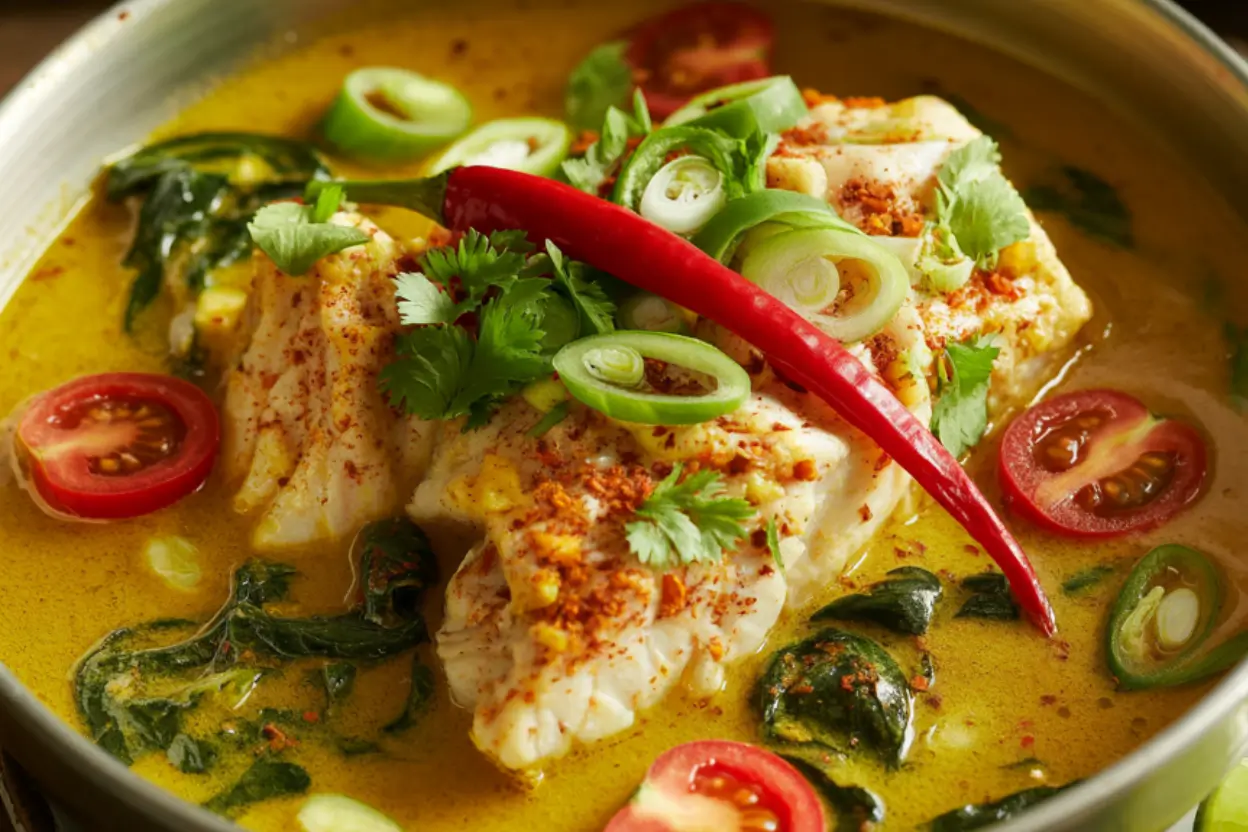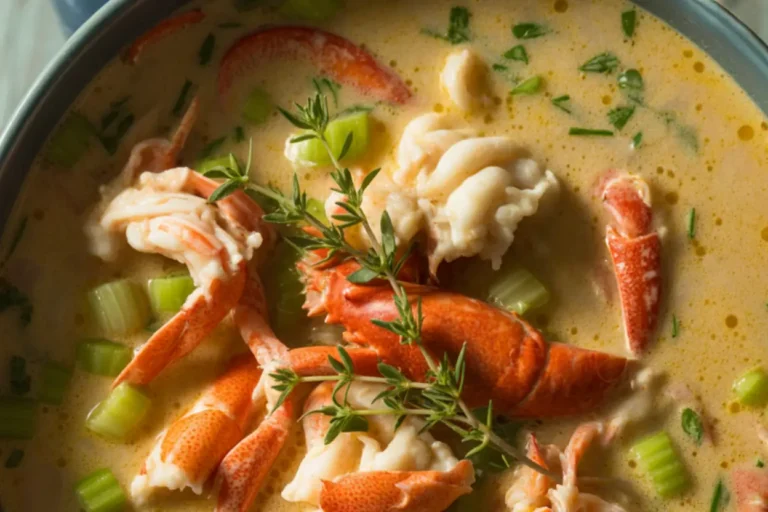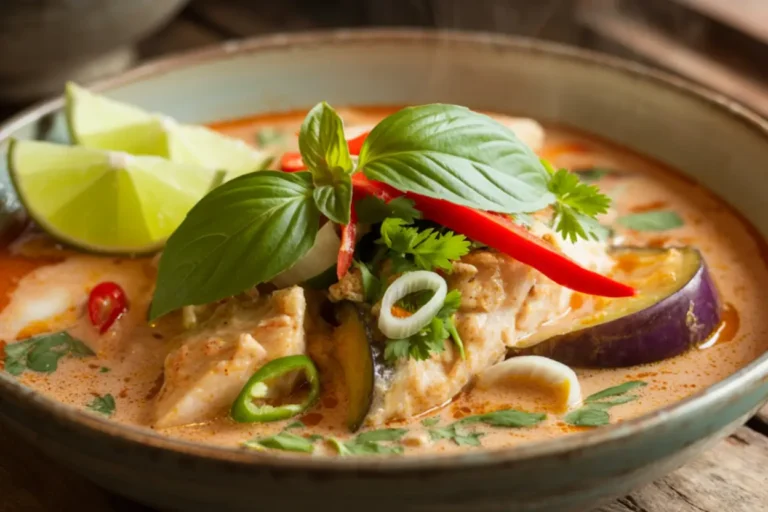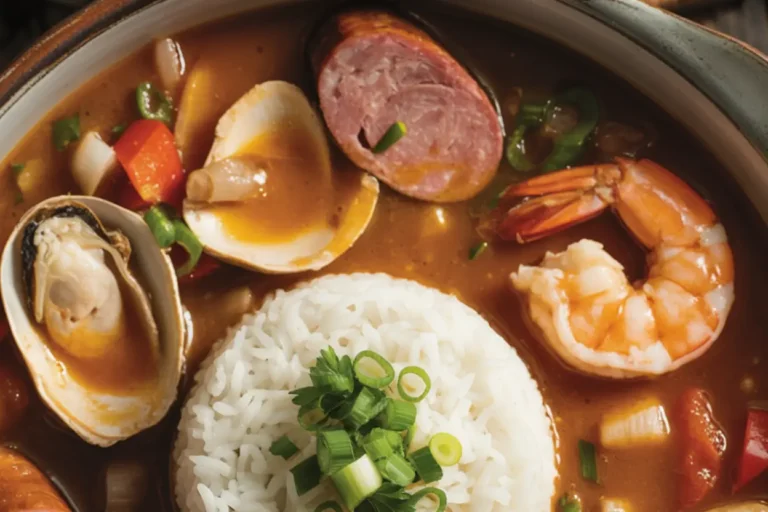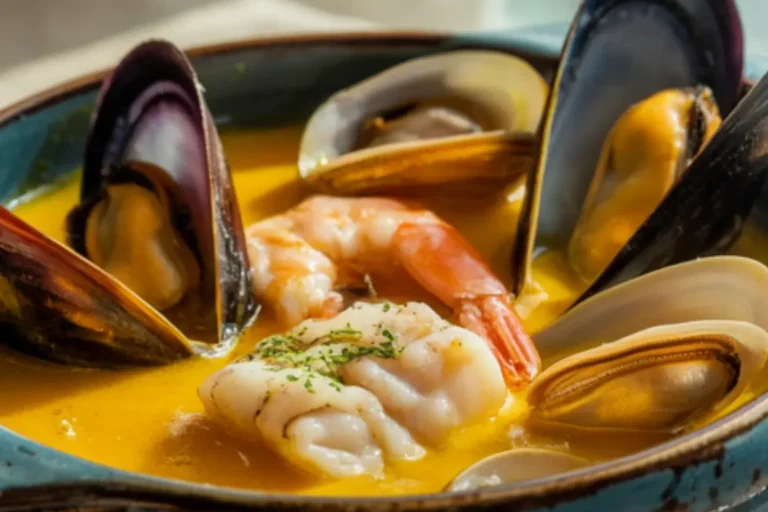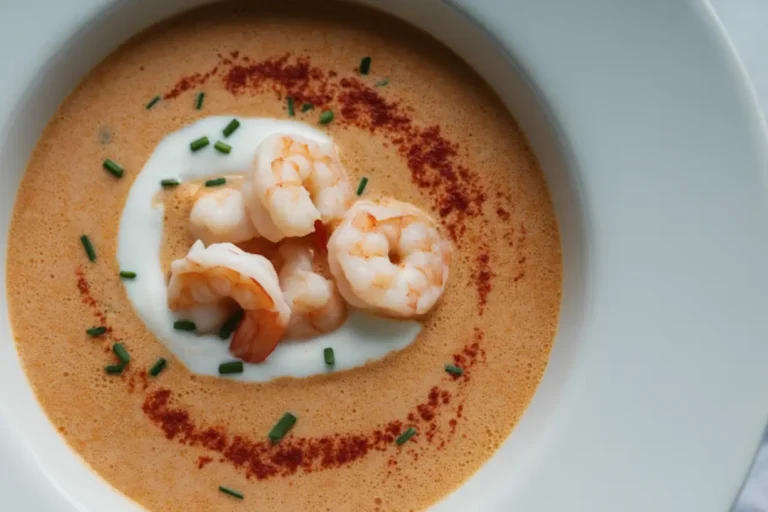Coconut Fish Curry Recipe: How to Make It in 30 Minutes
Table of Contents
There’s something undeniably comforting about a bowl of creamy, aromatic coconut fish curry. This dish manages to be both exotic and approachable, combining delicate fish with the rich, velvety texture of coconut milk and a perfect balance of spices. What’s even better is that you don’t need to spend hours in the kitchen or hunt down dozens of specialty ingredients to create this restaurant-quality meal at home.
Thank you for reading this post, don't forget to subscribe!After perfecting this recipe through countless iterations, I’m excited to share my streamlined method for creating a coconut fish curry that delivers maximum flavor with minimal effort. Whether you’re a curry enthusiast looking to expand your repertoire or a busy home cook seeking a quick yet impressive dinner option, this recipe will become a treasured addition to your collection. Let me show you how to create this delicious dish in just half an hour!
How to Make Coconut Fish Curry
Quick Overview
This coconut fish curry strikes the perfect balance between rich indulgence and fresh flavors. What makes this dish truly special is the way the delicate fish absorbs the fragrant curry sauce while still maintaining its tender texture. The creamy coconut milk creates a luxurious base that carries the warm spices and aromatics, resulting in a curry that feels like comfort food with a sophisticated twist.
One of the standout features of this recipe is its versatility – it works beautifully with virtually any firm white fish, making it adaptable to what’s fresh and available. The sauce achieves that elusive perfect consistency: thick enough to coat the fish generously but not so heavy that it overwhelms the dish. Each spoonful delivers a harmonious blend of creaminess, gentle heat from the spices, and bright notes from fresh herbs and lime.
Best of all, this impressive dish comes together in just 30 minutes total – 10 minutes for preparation and 20 minutes for cooking. This makes it perfect for busy weeknights when you want something extraordinary without spending hours in the kitchen. The hands-on time is minimal, with most of the cooking process involving simmering, allowing you to prepare a side dish or set the table while the curry develops its flavors.
The Ingredients I Use to Bring My Coconut Fish Curry to Life
To create this flavor-packed coconut fish curry, you’ll need the following ingredients:
For the curry base:
- 2 tablespoons vegetable or coconut oil
- 1 large onion, finely diced
- 3 cloves garlic, minced
- 1 tablespoon fresh ginger, grated
- 1-2 fresh red chilies, seeded and finely chopped (adjust according to heat preference)
- 2 tablespoons curry powder (mild or medium)
- 1 teaspoon ground turmeric
- 1 teaspoon ground cumin
- ½ teaspoon ground coriander
- 2 cans (13.5 oz each) full-fat coconut milk
- 2 tablespoons fish sauce (or soy sauce for a milder flavor)
- 1 tablespoon brown sugar
- 1 tablespoon tomato paste
- Juice of 1 lime
For the fish and vegetables:
- 1.5 pounds firm white fish fillets (cod, haddock, tilapia, or snapper work well), cut into 2-inch pieces
- 1 red bell pepper, sliced into thin strips
- 1 cup cherry tomatoes, halved
- 1 cup fresh spinach leaves (optional)
For garnish:
- ½ cup fresh cilantro, roughly chopped
- 2 green onions, thinly sliced
- 1 lime, cut into wedges
- Red chili slices (optional, for extra heat)
Step-by-Step Instructions
Preparing the Curry Base
- Heat the oil: In a large, deep skillet or Dutch oven, heat 2 tablespoons of oil over medium heat until shimmering but not smoking. A heavy-bottomed pan works best for even heat distribution and preventing the spices from burning.
- Sauté the aromatics: Add the diced onion to the hot oil and cook for 3-4 minutes until softened and translucent. Add the minced garlic, grated ginger, and chopped chilies, then continue cooking for another 1-2 minutes until fragrant. Stir frequently to prevent burning, as burnt garlic can impart a bitter taste to your curry.
- Bloom the spices: Add the curry powder, turmeric, cumin, and coriander to the aromatics. Stir continuously for 1 minute to toast the spices and release their essential oils. This “blooming” step is crucial for developing depth of flavor in your curry. The mixture should become very fragrant and slightly darker.
- Create the sauce base: Stir in the tomato paste and cook for 30 seconds, until it’s well incorporated with the spice mixture. This adds a subtle depth and slight tanginess that balances the richness of the coconut milk.
- Add the coconut milk: Pour in the two cans of coconut milk, stirring well to combine with the spice mixture. If the coconut milk has separated in the can (which is normal), be sure to include both the solid cream and liquid portions for the best texture and flavor.
- Season the sauce: Stir in the fish sauce and brown sugar until well combined. Simmer the mixture gently over medium-low heat, uncovered, for 5 to 7 minutes, allowing the sauce to slightly reduce and the flavors to blend.
Adding the Fish and Vegetables
- Prepare the fish: While the sauce simmers, check your fish pieces for any remaining bones and remove them with tweezers if necessary. Season the fish pieces lightly with salt and pepper.
- Add the vegetables: Stir the sliced red bell pepper into the simmering sauce. Allow it to cook for 2 minutes until it just begins to soften.
- Incorporate the fish: Gently add the fish pieces to the curry, carefully pushing them slightly into the sauce without stirring too vigorously. Add the cherry tomato halves, distributing them evenly throughout the curry.
- Simmer gently: Lower the heat to low, cover the pan, and let it simmer for 5 to 7 minutes, or until the fish turns opaque and flakes easily when tested with a fork. The exact cooking time will depend on the thickness of your fish pieces. Avoid overcooking, as the fish will continue to cook slightly from the residual heat after you remove it from the stove.
- Add finishing touches: Once the fish is cooked through, gently stir in the lime juice and fresh spinach leaves (if using). Allow the spinach to wilt in the residual heat for about 1 minute. Taste and adjust the seasoning if needed – you may want more fish sauce for saltiness, lime juice for acidity, or brown sugar for sweetness depending on your preference.
Serving
- Garnish: Remove the curry from the heat and let it rest for 1-2 minutes. Then sprinkle generously with fresh chopped cilantro and sliced green onions. The fresh herbs provide a bright contrast to the rich, creamy sauce.
- Serve immediately: Ladle the hot curry into bowls, ensuring each serving includes fish, vegetables, and plenty of the flavorful sauce. Provide lime wedges on the side for diners to add an extra squeeze of citrus if desired. For those who enjoy extra heat, offer additional sliced red chilies as an optional garnish.
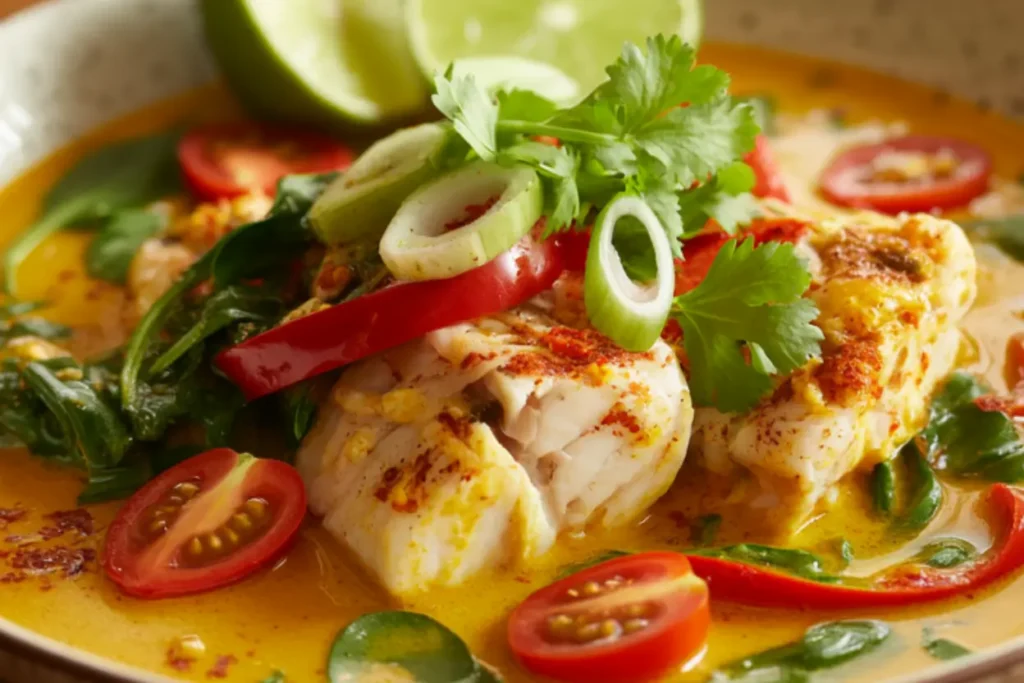
What to Serve Coconut Fish Curry With
This coconut fish curry is wonderfully versatile and pairs beautifully with a variety of side dishes:
Traditional Accompaniments:
- Steamed jasmine or basmati rice – the perfect canvas for soaking up the delicious sauce
- Coconut rice for an extra layer of coconut flavor
- Warm naan bread or roti for scooping up every last drop of curry
- Fragrant yellow rice with turmeric and cardamom
Vegetable Sides:
- A simple cucumber salad with rice vinegar for a cooling contrast
- Green beans, either steamed or sautéed, are lightly flavored with garlic.
- Roasted cauliflower with cumin and coriander
- A side of raita (yogurt with cucumber and mint) to temper the heat if you’ve made a spicier version
Drink Pairings:
- A cold, crisp lager or wheat beer
- Aromatic white wines like Gewürztraminer or Riesling that stand up to the spices
- Coconut water for a non-alcoholic option that complements the coconut in the curry
- Mango lassi for a sweet counterpoint to the savory curry
For a complete meal experience, I recommend serving the curry with steamed rice, a cooling vegetable side like cucumber salad, and naan bread for scooping. This combination offers contrasting textures and temperatures that enhance the overall dining experience.
Top Tips for Perfecting Coconut Fish Curry
After making this curry countless times, I’ve gathered these professional insights to help you achieve the best results every time:
Selecting the Right Fish:
- Firm white fish varieties work best as they hold their shape during cooking. Cod, haddock, tilapia, or snapper are excellent choices.
- Freshness is key – the fish should smell clean and oceanic, never fishy.
- If using frozen fish, thaw it completely in the refrigerator and pat dry with paper towels before adding to the curry.
- For a luxurious twist, try adding a few large shrimp or scallops along with the fish.
Coconut Milk Considerations:
- For the richest and most authentic curry texture, always opt for full-fat coconut milk. Using light coconut milk will create a thinner sauce with less depth and creaminess.
- Shake the can well before opening if it’s not separated, or stir together the cream and liquid if it has separated.
- If you prefer a thicker sauce, you can substitute one can of coconut milk with coconut cream.
- For a lighter option that still maintains good flavor, use 1½ cans of coconut milk and ½ cup of fish or vegetable stock.
Spice Level Adjustments:
- The recipe, as written, produces a mild to medium heat level that most people enjoy.
- For a milder curry, remove all seeds from the chilies or reduce the amount.
- For extra heat, include some of the chili seeds or add a pinch of cayenne pepper.
- Remember that coconut milk tempers heat, so the curry may taste spicier before you add it.
Common Mistakes to Avoid:
- Skipping the step of blooming the spices (this is essential for developing flavor)
- Boiling rather than simmering the curry (high heat can cause the coconut milk to separate)
- Overcooking the fish (it continues cooking from residual heat after being removed from the heat)
- Stirring too vigorously once the fish is added (gentle movement prevents the fish from breaking apart)
Ingredient Substitutions:
- No fresh chilies? Substitute with ½-1 teaspoon of dried chili flakes.
- Out of fresh ginger? Use ½ teaspoon of ground ginger instead.
- No fish sauce? Use soy sauce with a squeeze of lime juice, though the flavor profile will change slightly.
- For a vegetarian version, substitute the fish with firm tofu or mixed vegetables and use soy sauce instead of fish sauce.
- Don’t have curry powder? Create your own by mixing 1 teaspoon each of ground cumin, coriander, and turmeric with ½ teaspoon each of ground cardamom and paprika.
Special Tips for Exceptional Results:
- For extra depth of flavor, add a stalk of lemongrass (bruised and cut into 4-inch pieces) to simmer with the sauce, removing it before serving.
- A tablespoon of tamarind paste added with the coconut milk creates a wonderful tangy note.
- Adding a handful of spinach or kale at the end incorporates extra nutrition and color.
- For a more traditional approach, use a prepared red or yellow curry paste instead of the individual spices.
Storing and Reheating Tips
While coconut fish curry is best enjoyed fresh, leftovers can be delicious when properly stored and reheated:
Refrigeration:
- Allow the curry to cool completely before refrigerating, but don’t leave it at room temperature for more than 2 hours.
- Store in an airtight container in the fridge for up to 2 days. The flavors tend to deepen overnight, though the fish’s texture might change slightly.
- If possible, store the sauce separately from any leftover fish to prevent the fish from becoming overcooked when reheated.
Freezing Considerations:
- The curry sauce freezes beautifully without the fish. If you’re planning to freeze portions, consider setting aside some sauce before adding the fish.
- Complete curry with fish can be frozen for up to 1 month, though the texture of the fish will change somewhat upon thawing.
- Freeze in individual portions using airtight containers or sturdy freezer bags.
- Label with the date and dish name to make identification easy later on.
- For best results, thaw the frozen curry in the refrigerator overnight.
Reheating Methods:
- Stovetop Reheating (Preferred Method):
- Warm the curry slowly in a saucepan over low heat, stirring from time to time.
- Add a splash of coconut milk or water if the sauce has thickened too much during storage.
- Heat just until warmed through (about 165°F/74°C) – avoid boiling, which can toughen the fish and cause the coconut milk to separate.
- Add a squeeze of fresh lime juice after reheating to brighten the flavors.
- Microwave Method (When Short on Time):
- Use a microwave-safe container with a loose-fitting lid or microwave-safe cover.
- Heat at 50-70% power in 30-second intervals, stirring between each interval until just warmed through.
- This gentler heating helps prevent the sauce from separating and the fish from overcooking.
Refreshing Leftover Curry:
- Add fresh herbs after reheating to bring back brightness.
- A squeeze of lime juice revitalizes the flavor profile.
- If the sauce has thickened too much during storage, thin with a little coconut milk.
- For curry that has been frozen, you may need to adjust the seasoning slightly, as freezing can dull certain flavor notes.
Creative Ways to Repurpose Leftovers:
- Use leftover curry sauce as a poaching liquid for fresh fish or chicken.
- Combine with rice and vegetables to make stuffed bell peppers.
- Mix leftover curry with beaten eggs to make a flavorful frittata.
- Stir into cooked rice or noodles for a quick one-dish meal.
- Use as a flavor base for a seafood soup by adding more stock and fresh seafood.
With these detailed instructions and professional tips, you’re now equipped to create a restaurant-quality coconut fish curry in just 30 minutes. This accessible yet impressive dish delivers rich, complex flavors without complicated techniques or hard-to-find ingredients. Whether you’re cooking for a quick weeknight dinner or looking to impress guests with minimal effort, this recipe proves that extraordinary meals don’t require extraordinary time commitments. Savor the rich, aromatic flavors of this coconut fish curry—just be ready for everyone to come back for more!
click here to follow me on pinteest
Coconut Fish Curry Recipe: How to Make It in 30 Minutes
Cuisine: IndianDifficulty: Easy to Medium4
servings20
minutes30
minutes450-550
kcalCoconut Fish Curry is a flavorful dish made with tender fish simmered in a rich, creamy coconut milk sauce, infused with spices like turmeric, ginger, garlic, and chili. This tropical-inspired curry is popular in coastal cuisines and offers a perfect balance of heat, creaminess, and vibrant flavor. Served with rice, it’s a comforting, aromatic meal that’s both satisfying and easy to make.
Ingredients
2 tablespoons vegetable or coconut oil
1 large onion, finely diced
3 cloves garlic, minced
1 tablespoon fresh ginger, grated
1-2 fresh red chilies, seeded and finely chopped (adjust according to heat preference)
2 tablespoons curry powder (mild or medium)
1 teaspoon ground turmeric
1 teaspoon ground cumin
½ teaspoon ground coriander
2 cans (13.5 oz each) full-fat coconut milk
2 tablespoons fish sauce (or soy sauce for a milder flavor)
1 tablespoon brown sugar
1 tablespoon tomato paste
Juice of 1 lime
1.5 pounds firm white fish fillets (cod, haddock, tilapia, or snapper work well), cut into 2-inch pieces
1 red bell pepper, sliced into thin strips
1 cup cherry tomatoes, halved
1 cup fresh spinach leaves (optional)
½ cup fresh cilantro, roughly chopped
2 green onions, thinly sliced
1 lime, cut into wedges
Red chili slices (optional, for extra heat)
Instructions
- Build the Curry Base
- Heat oil in a deep skillet. Sauté onions until soft, then add garlic, ginger, and chilies. Cook until fragrant. Stir in curry powder, turmeric, cumin, and coriander to bloom the spices.
- Make the Sauce
- Add tomato paste and cook briefly. Stir in coconut milk (including solid and liquid parts), fish sauce, and brown sugar. Simmer for 5–7 minutes to blend flavors.
- Add Fish & Veggies
- Season fish. Add sliced bell pepper to the sauce and cook 2 minutes. Gently place fish and cherry tomatoes in the sauce.
- Simmer Gently
- Cover and simmer on low heat for 5–7 minutes, until the fish flakes easily. Stir in lime juice and spinach (if using) to wilt.
- Finish & Serve
- Garnish with chopped cilantro and green onions. Serve hot with lime wedges and extra chilies if desired.

